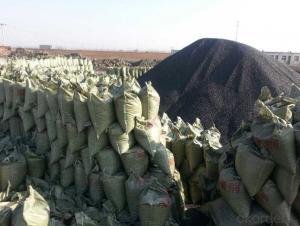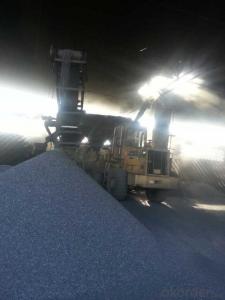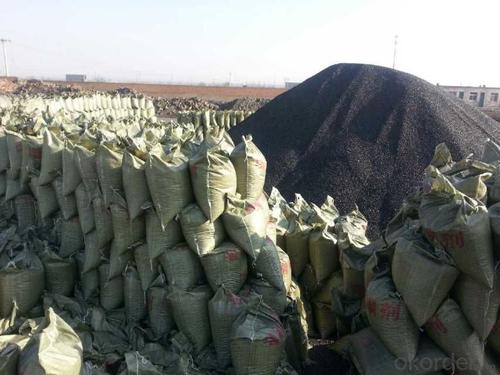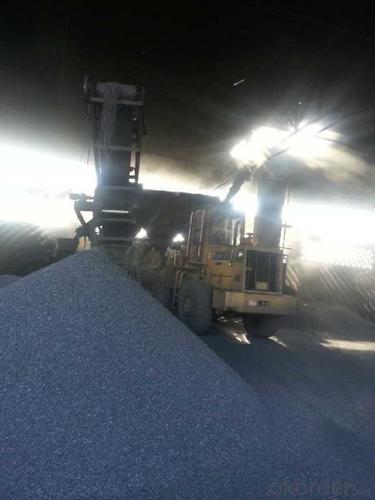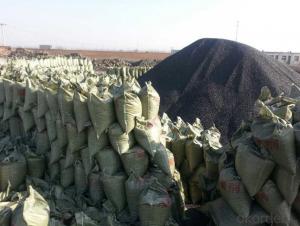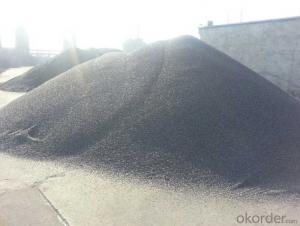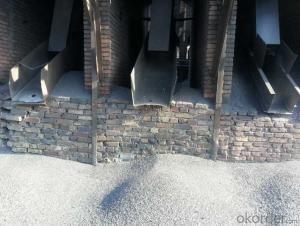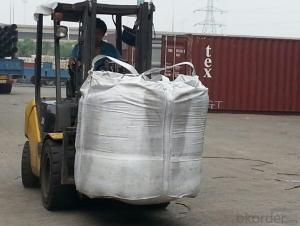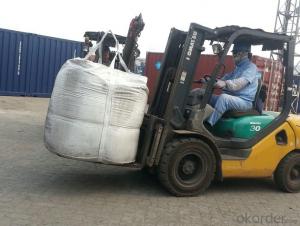Charge Coke FC85% min with stable quality
- Loading Port:
- Tianjin
- Payment Terms:
- TT OR LC
- Min Order Qty:
- 20 m.t.
- Supply Capability:
- 3000 m.t./month
OKorder Service Pledge
OKorder Financial Service
You Might Also Like
Packaging & Delivery
25kgs/50kgs/1ton per bag or as buyer's request
Specifications
Calcined Anthracite
Fixed carbon: 90%-95%
S: 0.5% max
Size: 0-3. 3-5.3-15 or as request
It used the high quality anthracite as raw materials through high temperature calcined at over 2000 by the DC electric calciner with results in eliminating the moisture and volatile matter from anthracite efficiently, improving the density and the electric conductivity and strengthening the mechanical strength and anti-oxidation. It has good characteristics with low ash, low resistvity, low sulphur, high carbon and high density. It is the best material for high quality carbon products.
Advantage and competitive of caclined anthracite:
1. strong supply capability
2. fast transportation
3. lower and reasonable price for your reference
4.low sulphur, low ash
5.fixed carbon:95% -90%
6..sulphur:lower than 0.3%
General Specification of Calcined Anthracite:
| FC | 80 | 83 | 85 | 88 | 90 |
| ASH | 16 | 14 | 13 | 10 | 8.5 |
| V.M. | 3 | 3 | 2 | 2 | 1.5 |
| S | 0.5 | 0.5 | 0.5 | 0.5 | 0.35 |
| MOISTURE | 2 | 2 | 1 | 1 | 0.5 |
Pictures
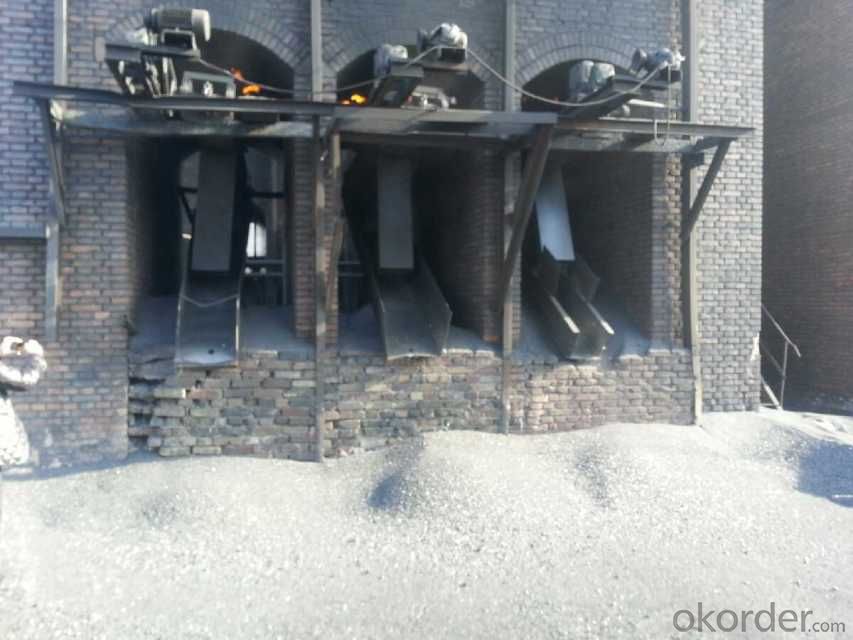
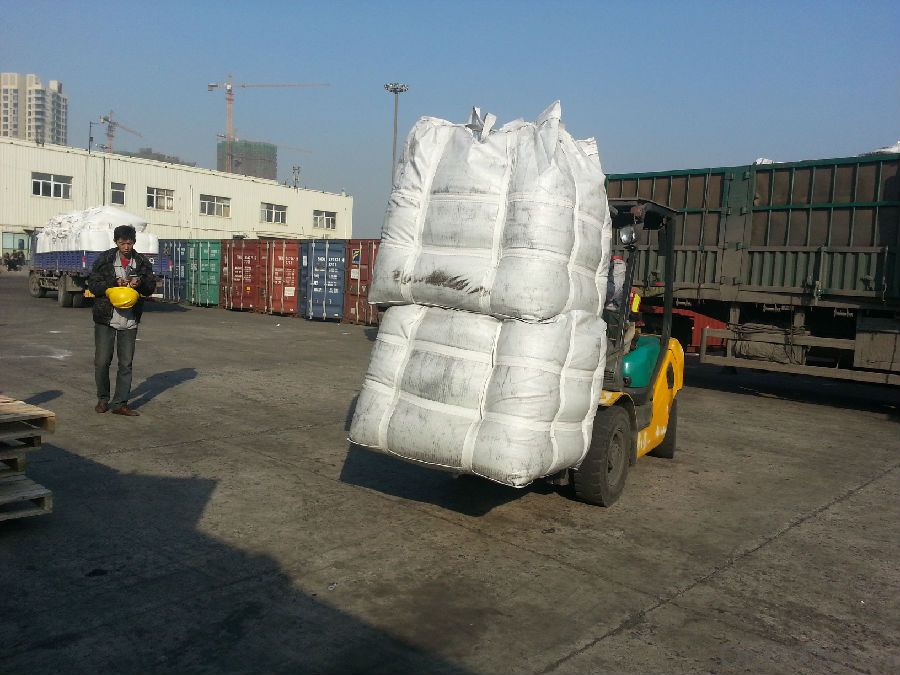
We are also strong at below materials, please contact us if you are interested in any of them:
Calcined Petroleum Coke
Carbon Electrode Paste
Carbon Electrode
- Q: Something that seems to be used in the locomotive brake system. I haven't seen it, either. Who knows? It's better for the locomotive system to go back. Thank you!!
- The texture of the skateboard is relatively soft, so the main loss in contact with the contact wire is on the slide plate, and the wear of the contact wire is very small.
- Q: Appearance, hardness, electrical conductivity, use of carbon 60
- C60 does not normally conduct electricity because C60 is so large that it can put other atoms into it and affect its physical properties, so it cannot be electrically conductiveUsed to strengthen metalImprove the metal material strength by alloying, plastic deformation and heat treatment, one of the ways to strengthen the interaction through geometry, such as coke carbon dispersed in the metal, carbon and metal exchange position in the crystal lattice, can cause plastic deformation of metal, carbon and metal carbide particles that can make the metal enhanced. In the enhancement of metal materials, the effect of C60 ratio of carbon in coke is better, this is because the C60 is higher than the smaller particles, active carbon, particle size of C60 with metal carbide dispersion effect is 0.7nm, and the particle size of carbon and metal carbide dispersion effect the body is 2 m ~ 5 m, has a larger difference in enhancing the role of the metal.Used as a new catalystIn C60, the electronic structure of chemists began to explore the possibility of.C60 catalyst for C60 with olefin, with transition metal (such as platinum and nickel metal) to form a series of complexes. For example C60 and platinum, osmium can be combined into {[(C2H5) 3P]2Pt}C60 and C60OsO4 (four butylpyridine) and other coordination compounds and they are likely to become the efficient catalyst.Japanese researchers Toyohashi University of science and technology of the synthesis of highly catalytic activity of palladium Pt synthesis researchers and C60 compound C60Pd6. China Wuhan University (PPh3) 2C60 (PPh3 three, triphenylphosphine) for hydrosilylation reaction with high catalytic activity.
- Q: What's a carbon cloth to do as a fish pole?
- This is difficult, usually with a lathe like tool, by heating in the brush, layer by layer roll up, and finally cut off paint, baking
- Q: What are the consequences of increased carbon emissions on social inequality?
- Increased carbon emissions have profound consequences on social inequality. The primary consequence is the exacerbation of existing inequalities, particularly in disadvantaged communities. Firstly, the effects of climate change, driven by carbon emissions, disproportionately impact marginalized communities, including low-income neighborhoods and developing countries. These communities often lack the resources and infrastructure necessary to withstand extreme weather events, such as hurricanes or flooding, resulting in greater vulnerability and loss of livelihoods. Secondly, the economic consequences of carbon emissions, such as rising energy costs and reduced agricultural productivity, further widen the gap between the rich and the poor. Affluent individuals may be able to adapt to these changes, while those with limited financial resources struggle to cope, leading to increased poverty and socio-economic disparities. Moreover, increased carbon emissions contribute to health disparities. Polluted air, resulting from carbon emissions, disproportionately affects low-income neighborhoods, where industrial plants and highways are often located. This leads to higher rates of respiratory diseases and other health issues among marginalized communities, exacerbating existing health inequalities. Furthermore, the impacts of climate change, driven by carbon emissions, can lead to forced displacement and migration. As environmental conditions deteriorate, communities may be forced to relocate, often resulting in social disruption and increased competition for resources. This can further marginalize vulnerable populations and create conflicts over land and access to resources. Lastly, the consequences of carbon emissions on social inequality extend globally. Developing countries, which contribute less to carbon emissions but bear a disproportionate burden of the impacts, face significant challenges in addressing climate change. Limited resources and technological capabilities hinder their ability to adapt and mitigate the effects, perpetuating global inequalities. In conclusion, increased carbon emissions have grave consequences on social inequality. They worsen existing disparities, particularly affecting marginalized communities, through the disproportionate impacts of climate change, economic hardships, health disparities, forced displacement, and global inequalities. Addressing carbon emissions and climate change is crucial not only for environmental sustainability but also for promoting social justice and reducing social inequality.
- Q: How does carbon impact the prevalence of avalanches?
- Carbon has a significant impact on the prevalence of avalanches. The increase in carbon emissions and subsequent global warming is leading to changes in snowpack stability, which in turn affects avalanche frequency and severity. As temperatures rise, snowfall patterns are becoming more unpredictable, with more frequent freeze-thaw cycles. This creates a weaker snowpack as the snow becomes less cohesive and more prone to sliding. Additionally, warmer temperatures cause more rain to fall instead of snow, further destabilizing the snowpack by adding weight and reducing its strength. These changes in snowpack stability increase the likelihood of avalanches occurring. Moreover, climate change also affects the timing and duration of snow accumulation. With warmer temperatures, snow melt occurs earlier, which can lead to a reduced snowpack during the peak avalanche season. This can result in a higher likelihood of triggering avalanches, as there may be a smaller buffer of stable snow to support the weight and stress of additional snowfall or human activity. Furthermore, carbon-induced climate change can alter the frequency and intensity of extreme weather events, such as heavy snowfalls or rainstorms. These events can cause rapid and significant changes in snowpack conditions, leading to an increased risk of avalanches. In summary, the impact of carbon on the prevalence of avalanches is significant. The warming climate affects snowpack stability, timing and duration of snow accumulation, and the frequency of extreme weather events, all of which contribute to an increased risk and prevalence of avalanches.
- Q: What is carbon footprint labeling?
- Carbon footprint labeling is a system that provides information about the carbon emissions associated with a product or service. It aims to educate consumers about the environmental impact of their purchases and enable them to make more sustainable choices. The labeling typically includes a measure of the greenhouse gas emissions produced during the entire life cycle of a product, including its production, transportation, and disposal. This allows consumers to compare the carbon footprints of different products and make informed decisions based on their environmental values. Carbon footprint labeling is an important tool in promoting sustainability and encouraging businesses to reduce their emissions. It also raises awareness about the impact of individual consumption choices on climate change and encourages a shift towards more environmentally friendly alternatives.
- Q: Buy carbon carving, how to identify him is true or false, and the quality of good or bad?
- Most consumers think the difference between "Zijin carbon carving" and activated carbon is a cheap, a noble, a beautiful, a dirty, in fact they have a completely different function, "Zijin carbon carving at least three point is beyond the powder activated carbon.One is "up to 100 times longer and even thousands of times the Zijin carbon carving" activated carbon powder than life, there is a gap between the granular activated carbon powder, the gap will be preferential adsorption of water vapor, in one to two months (the South may be less than half a month) to form a hydrophilic outer shell thus, lost its adsorption function, and the "Zijin carbon carving" the large volume high fine carbon, molecular absorption pressure technology of gapless combined, and through the fine carbon activation activation of the "Zijin carbon carving" internal logic array pore formation, through carbonization and activation, pore forming process makes "Zijin carbon carving" to achieve through the hole directional adsorption of formaldehyde, benzene and other toxic and harmful gases but also through the large hole directional water vapor, but also through the hole directional adsorption of radiation, thereby greatly prolonging the service life.Second is the powder activated carbon particles easily suspended in the indoor air, forming second pollution, and "Purple carbon carving" seamless seamless activated carbon sublimation products, no pollution second times.Third, "Purple carbon carving" has an elegant artistic form. It is an ideal decoration for home and office, and the purification effect is more thorough
- Q: What are the properties of carbon-based ceramics?
- Carbon ceramics, also called carbon-based ceramics, are a distinct group of materials known for their exceptional properties, making them highly sought-after for various uses. These properties consist of: 1. Exceptional resistance to high temperatures: Carbon ceramics demonstrate remarkable thermal stability, enabling them to endure extremely high temperatures without significant deterioration or structural changes. This characteristic renders them ideal for applications in high-temperature environments like aerospace components, brake systems, and heat shields. 2. Low density: Carbon ceramics are characterized by their lightweight nature due to their low density. This quality proves advantageous in industries where weight reduction is essential, such as automotive and aerospace, as it enhances fuel efficiency and overall performance. 3. High hardness and resistance to wear: Carbon-based ceramics possess outstanding hardness and wear resistance, endowing them with durability and the ability to withstand abrasive forces. This attribute makes them suitable for use in cutting tools, bearings, and other applications that require resistance to wear and erosion. 4. Excellent resistance to chemicals: Carbon ceramics are renowned for their excellent chemical resistance, enabling them to withstand corrosion and degradation when exposed to aggressive chemical environments. This property proves valuable in industries like chemical processing, semiconductor manufacturing, and others that require resistance to chemical attack. 5. Good electrical conductivity: Unlike traditional ceramics, carbon-based ceramics exhibit good electrical conductivity due to the presence of carbon in their composition. This quality makes them useful in applications that necessitate both thermal insulation and electrical conductivity, such as heating elements, electrodes, and electronic components. 6. Customizable properties: Carbon ceramics offer the advantage of tailoring their properties to meet specific requirements by adjusting the composition and processing methods. Variables like carbon content, porosity, and microstructure can be modified to customize the mechanical, thermal, and electrical properties of carbon ceramics to suit particular application needs. In conclusion, carbon-based ceramics possess a unique set of properties, including high temperature resistance, low density, high hardness, excellent chemical resistance, good electrical conductivity, and the ability to customize their properties. These properties make them valuable materials across a wide range of industries, including aerospace, automotive, chemical processing, and electronics.
- Q: I saw a cell phone in the magazine, the global release of 900, no camera, what function is F1 carbon fiber material, actually sold 40000 yuan a piece!.. Everyone said that the circulation is so small, worth so much money? Or carbon fiber material worth so much money?
- See where, in a car for example transformation kit, with super run even if the civil area shape roughly the same but the price difference, if you feel that things are expensive, natural carbon prices go up, in fact carbon species layout production process characteristics of professional strength lot, do not understand
- Q: What are the advantages of carbon-based fuel cells?
- There are several advantages of carbon-based fuel cells. Firstly, carbon-based fuel cells, such as those using hydrogen or methanol, have a high energy density, allowing for longer operating times and greater efficiency. Secondly, carbon-based fuel cells are environmentally friendly as they produce fewer emissions compared to traditional fossil fuel combustion. Additionally, carbon-based fuel cells are versatile and can be used in a variety of applications, from powering vehicles to providing electricity for homes and businesses. Finally, carbon-based fuel cells offer a promising alternative to traditional energy sources, reducing our dependence on finite resources and contributing to a more sustainable future.
Send your message to us
Charge Coke FC85% min with stable quality
- Loading Port:
- Tianjin
- Payment Terms:
- TT OR LC
- Min Order Qty:
- 20 m.t.
- Supply Capability:
- 3000 m.t./month
OKorder Service Pledge
OKorder Financial Service
Similar products
Hot products
Hot Searches
